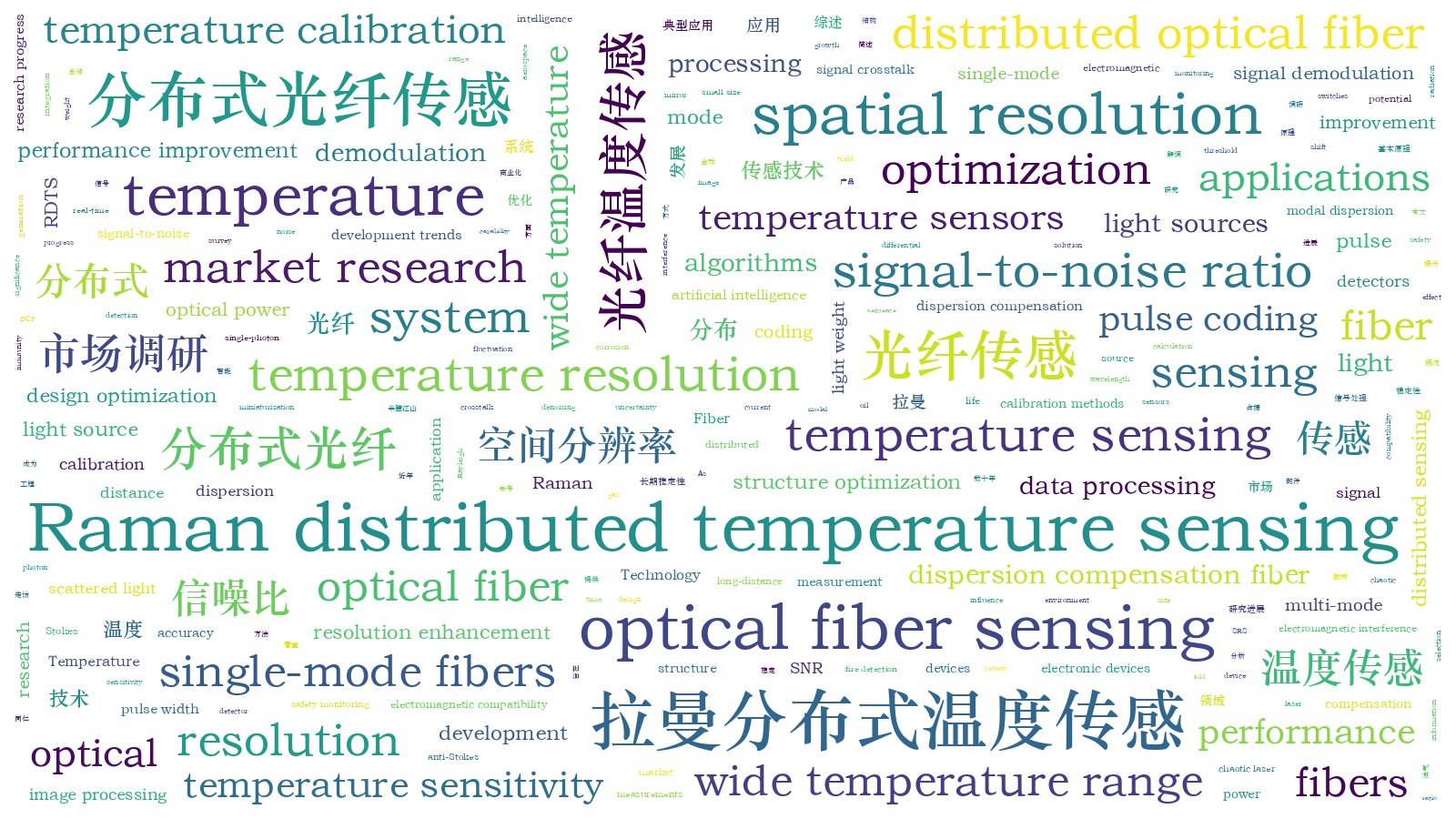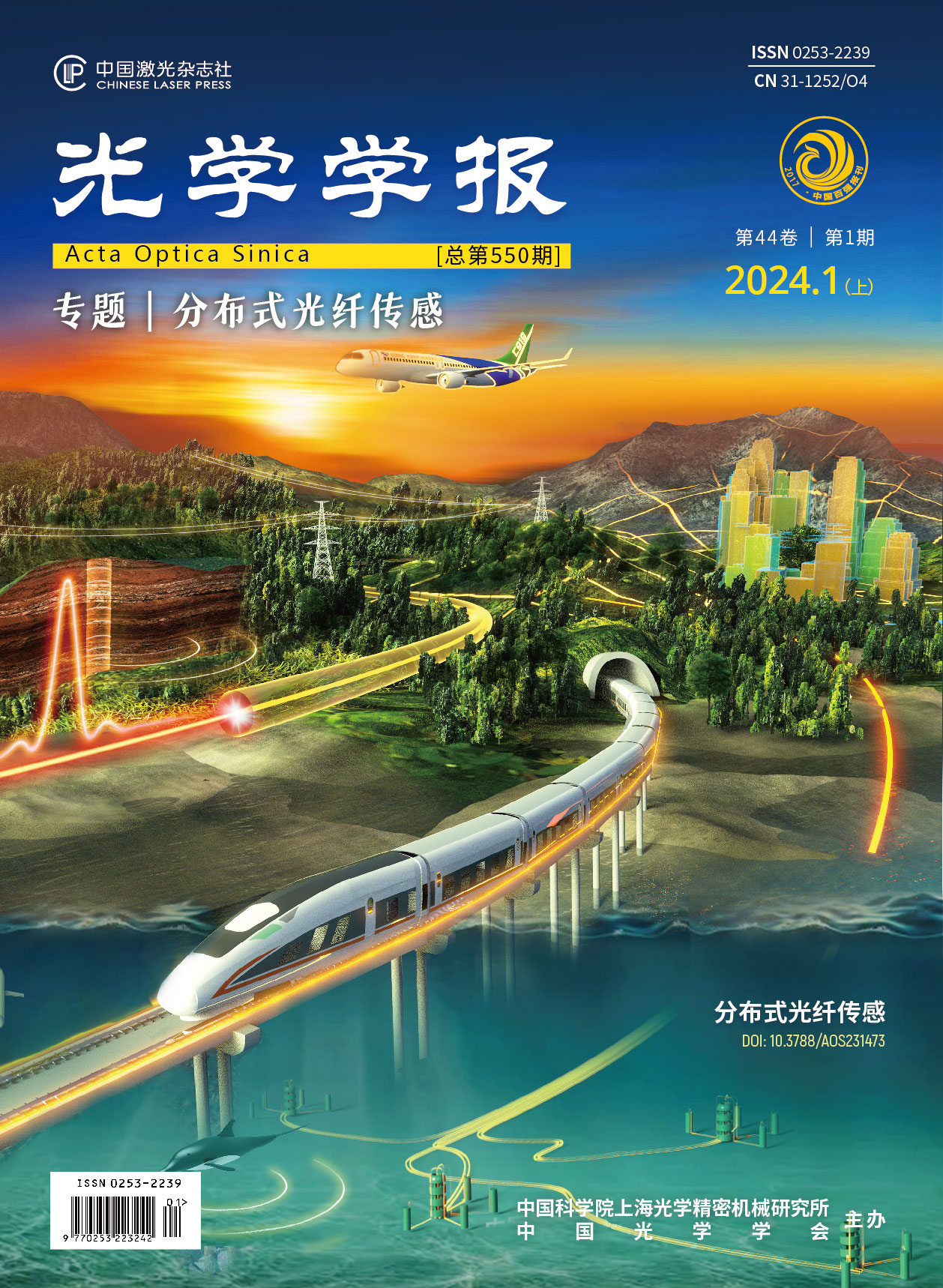拉曼分布式光纤温度传感:技术发展与应用综述  下载: 1673次特邀综述
下载: 1673次特邀综述
Temperature measurement is a common requirement in the daily life of human beings and production activities. Abnormal and abrupt temperature variations in such diverse important fields as civil engineering, industrial machinery, aerospace, and infrastructure can cause significant economic losses and are even life-threatening. High-accuracy and real-time measurements of temperature distributions are thus demanding, and different technologies have been developed accordingly. Specifically, optical fiber-based temperature sensors have been demonstrated as unparalleled modalities in harsh-environment applications, which is due to their distinct advantages over conventional electrical devices, such as small size, light weight, immunity to electromagnetic interference and chemical corrosion, and importantly, the capability for spatially distributed sensing.
As one of the most important optical fiber temperature sensing technologies, Raman distributed optical fiber temperature sensing (RDTS) systems have outstanding advantages of electromagnetic compatibility, long sensing distance, and wide temperature range. Thus, they are widely adopted in the safety monitoring of infrastructure structures, the oil and gas industry, fire detection, and many other fields. The first RDTS system can be dated back to 1985, when a sensing distance of 1 km is realized with a spatial resolution of 3 m based on the first generation of opto-electronic devices. Recent years have witnessed tremendous growth and advancement in light sources, detectors, sensing elements (i.e., optical fibers), and signal demodulation techniques, which leads to new generations of RDTS systems with significantly enhanced performance measures. It is of significance to summarize and discuss the existing research progress and future development trends for further development in RDTS systems.
We review the advanced RDTS technology based on the performance improvement methods mainly in three aspects of system optimization, temperature demodulation, and data processing. Firstly, the system optimization is focused on the system structures and components. The structure optimization is mainly conducted as the double-ended or loop structure, which involves the adoption of optical switches or an additional mirror at the optical fiber end to reduce the uncertainty of measured temperature in the long-term utilization. The components optimization mainly involves the optimization of the light source, detector, and sensing fiber. In the light source, related research concentrates on the wavelength and pulse width selection, application of pulse coding technology, and employment of new-type light sources. In terms of detectors, with the rapid development of single-photon detectors, their applications in ROTDR systems are bound to bring greater performance improvement. In terms of sensing fiber, the adoption of dispersion shift fiber (DSF), dispersion compensation fiber (DCF), and low water peak fiber provide a new idea for long-distance sensing. Few-mode fibers (FMFs) combine the advantages of single-mode and multi-mode fibers and yield better performance in RDTS systems. Secondly, in temperature demodulation, a variety of calibration and compensation methods are summarized in the problems of optical power fluctuation, Rayleigh scattered light residue, and differential temperature sensitivity for Stokes and anti-Stokes. Thirdly, the data processing mainly involves the applications of various denoising algorithms to improve the spatial resolution and signal-to-noise ratio (SNR) of the systems.
Subsequently, a global market survey of RDTS systems is summarized. The main research and development institutions and manufacturers at home and abroad are listed by combining the performance comparison of their typical products. The typical applications in various engineering scenarios are presented.
The current research achievements of RDTS systems can be comprehensively summarized from three perspectives including system optimization, temperature demodulation, and data processing. In terms of system optimization, pulse coding technology can enhance the SNR by over 10 dB without compromising the system's spatial resolution. The application of genetic optimization algorithms to find the optimal pulse coding sequence maximizes the advantages of pulse coding, leading to more than seven-fold improvement in temperature resolution. By introducing chaotic laser sources into the RDTS system and combining relevant demodulation algorithms, the spatial resolution can be increased from 50 m to 0.3 m. The utilization of FMFs provides a viable solution to overcome both the low SRS threshold of single-mode fibers (SMFs) and the large modal dispersion of multi-mode fibers (MMFs). Compared to SMF (MMF), this approach significantly enhances system temperature (spatial) resolution with minimal influence on spatial (temperature) resolution. In the context of temperature demodulation, various calculation methods of temperature calibration are introduced to mitigate the effect of system power fluctuations, signal crosstalk, and losses on measurement results. Appropriate calibration methods can improve temperature accuracy by over 14 ℃. Regarding data processing, in recent years, algorithms based on image processing and artificial intelligence have been successively applied to RDTS systems, both improving SNR and contributing to spatial resolution enhancement. Under the applications of these algorithms, spatial resolution can increase by five times, and temperature resolution reaches the order of 0.01 ℃.
Furthermore, we summarize the domestic and international market trends of the RDTS systems and major vendors and compile information on typical products offered by these vendors. However, compared to foreign products, there is room for further improvement in the technical indicators of domestic products.
With an increasing number of proposed ideas, there is considerable potential for enhancing the performance of RDTS systems. Achieving miniaturization by device integration and enhancing portability is a long-term theme for the development. The application and optimization of various artificial intelligence algorithms will also equip the systems with faster processing speeds and superior performance. Additionally, rational design optimization of sensing optical fibers and other system-related aspects could further expand the systems' applications in extreme environments such as ultra-high and low temperatures, and nuclear radiation. Many potential applications of this deserve further exploration.
介瑞敏, 肖春, 刘旭, 朱琛, 饶云江, 刘波. 拉曼分布式光纤温度传感:技术发展与应用综述[J]. 光学学报, 2024, 44(1): 0106011. Ruimin Jie, Chun Xiao, Xu Liu, Chen Zhu, Yunjiang Rao, Bo Liu. Raman Distributed Optical Fiber Temperature Sensing: Review of Technology and Applications[J]. Acta Optica Sinica, 2024, 44(1): 0106011.







